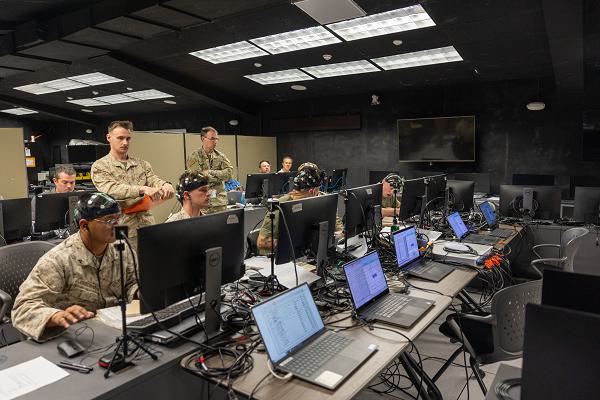
Twentynine Palms, California. (Jun 18, 2025): No surprises. These are the watchwords for Marine commanders as they prepare their troops for combat. One of the key tools for planning successful operations is the Marine Corps’ Battle Simulation Center. In this photo by Corporal Anna Higman, Marines with the 3rd Light Armored Reconnaissance Battalion, 1st Marine Division, I Marine Expeditionary Force, participate in simulated training at the Marine Corps Air Ground Combat Center.
The Marines are collaborating with the Defense Advanced Research Project Agency (DARPA) to study and improve Marine Corps training using advanced technology. DARPA is famous for developing game-changing technological advances like the Internet, GPS, drones, and stealth aircraft. The agency also funds research studies that keep the U.S. military on the forefront of modern warfare.
In developing the Battle Simulator, DARPA has created the capability to objectively measure individual and team performance by capturing physiological and behavioral signals. The simulator looks at physiological signals such as heart rate, brain waves, eye movement, facial expressions, and communication patterns in a real-world training environment. The Corps is hoping to create a baseline of what makes a team efficient and then use it to establish faster training schedules and improved technologies to help a team work well together.
The Battle Simulation software allows for a constant flow of Marines to participate in a wide spectrum of scenarios. These battle situations are made to be as realistic as possible through simulated communication with artillery units, aircraft, and other Marines. The simulator can present problems for any warfighting discipline from infantry to logistics, and from all parts of the combat spectrum from full scale war to establishing local governance when the battle is over.
The program is divided into three phases, virtual, constructive, and live training. Participants begin using virtual systems to test various scenarios followed by “constructive” training that displays what is supposed to be done in certain situations. The Marines receive live feedback from their instructors which allows them to correct mistakes without the risk of injury or loss of resources.
Currently, the Marines use the Battle Simulation Center as the last check of readiness before they deploy for combat.


